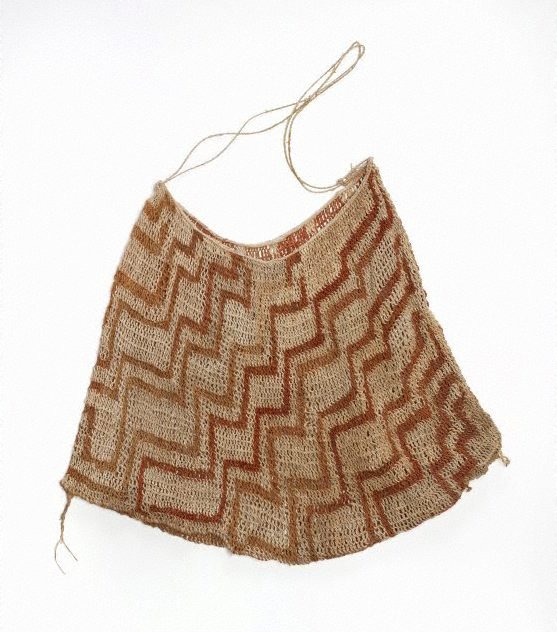-
Details
- Other Title
- Billum bag
- Place where the work was made
-
Wonenara
→
Obura-Wonenara District
→
Eastern Highlands Province
→
Papua New Guinea
- Cultural origin
- Baruya people
- Dates
- mid 20th century
collected 1969 - Media category
- Textile
- Materials used
- looped plant-fibre string, pale red and brown plant dye
- Dimensions
-
44.5 x 48.0 cm looped bag, expandable
:
0 - Whole, 61 cm, base
0 - Whole, 33 cm, neck
- Credit
- Gift of Stan Moriarty 1977
- Location
- Not on display
- Accession number
- 538.1979
- Copyright
- © Baruya people, under the endorsement of the Pacific Islands Museums Association's (PIMA) Code of Ethics
- Share
-
-
About
Across Papua New Guinea the humble string bag, or 'bilum', is the most common accessory of everyday life. 'Bilum' are almost always made by women, created using a looping technique with a single length of hand-spun plant fibre. They vary in size from large expandable open-looped carryalls to small tightly looped objects used as amulets or ceremonial objects. Patterns are incorporated into the construction using coloured fibres dyed with extracts from flowers, berries and other plants.
'Bilum' bags carried by women hold everything from firewood to babies. Men's 'bilum' are used to store ritual paraphernalia, heirlooms and everyday items, including pipes and tobacco.
Today, women produce 'bilum' with modern designs using colourful acrylic and wool yarns. The looping technique is also used to fashion spectacular clothing, known as 'bilumwear'. These new creations have established a sustainable means for highlands women to earn a living for their families.
[Exhibition text for 'Plumes and pearlshells: art of the New Guinea highlands', AGNSW, 2014]
-
Places
Where the work was made
Wonenara
-
Exhibition history
Shown in 1 exhibition
Plumes and pearlshells: art of the New Guinea highlands, Art Gallery of New South Wales, Sydney, 30 May 2014–10 Aug 2014
-
Bibliography
Referenced in 1 publication
-
Natalie Wilson (Editor), Plumes and pearlshells: art of the New Guinea highlands, Sydney, 2014, 134 (colour illus.), 163. cat.no. 77
-
